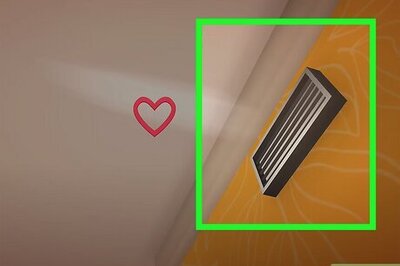
views
BANGALORE: The visual sense is among the most important for the normal daily activities of the elderly. Some type of sight-threatening eye problem affects one in six adults aged 45 and older. And the risk for vision loss only increases with age. Many older people don’t realise how untreated, age-related eye changes can harm vision and, eventually, their entire quality of life.Regular eye exams are the best way to make sure you maintain healthy vision for a lifetime, even as you grow older. Majority of the visually disabled older people enter their retirement years with no more than presbyopia. This is an age related loss in near focusing ability noticed in the 40s. For seeing the close or intermediate distance the person would require bifocals and progressive lenses in their spectacles.Presbyopia along with preexisting long sight (hyperopia), short sight (myopia) and astigmatism account for almost 40 per cent of visual diseases in the elderly. Common causes of vision loss in the elderly can be classified into acute and chronic. Acute causes include retinal detachment and occlusion of the blood vessels in the retina. These could have early symptoms of spots and floaters in your field of vision, a dark curtain has settled across your field or even blind spots. This is a medical emergency and an early eye examination by an ophthalmologist is a must.Cataract: is one of the most common treatable causes of gradual visual impairment in the elderly throughout the world. A clouding of the eye’s natural lens causes a gradual diminution of vision. A phacoemulsification surgery with an intraocular lens implant enables almost full recovery of the vision.Age-related Macular Degeneration: Also known as AMD or ARMD, is the next leading cause of vision loss and blindness. AMD is degeneration of the macula, which is the part of the retina responsible for the sharp, central vision needed to read or drive. Because the macula primarily is affected in AMD, central vision loss may occur. About 1.75 million US residents currently have advanced age-related macular degeneration with associated vision loss, with that number expected to grow to almost 3 million by 2020. There is as yet no outright cure for age-related macular degeneration, but some treatments may delay its progression or even improve vision.Glaucoma: It is a category of eye disorders often associated with a dangerous buildup of intraocular pressure (IOP), which can damage the eye’s optic nerve that transmits visual information to the brain. Much like blood pressure glaucoma can only be controlled with medicines, surgery or laser. With untreated or uncontrolled glaucoma, you might eventually notice decreased ability to see at the edges of your vision (peripheral vision). Progressive eye damage could then lead to blindness.Dr Y Umesh, Chief Medical Officer, Sankara Eye Hospital




















Comments
0 comment